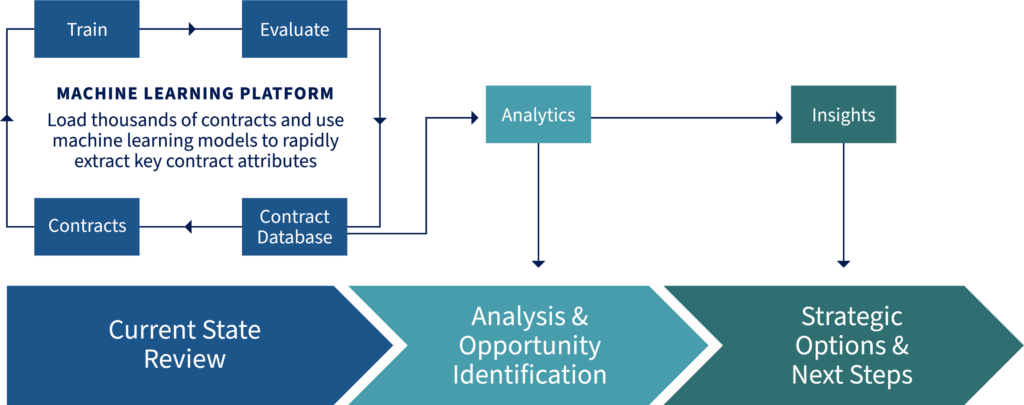Comprehensive Supplier Rationalization Delivers Tangible Benefits
Supplier Rationalization reduces IT costs and operational complexity while laying the groundwork for
more strategic and symbiotic partnerships with a manageable set of suppliers. Such rationalization must
also take into account the supplier ecosystem’s robustness and resilience in responding to adverse
events.
Organizations looking to rationalize their supplier ecosystem should use data-driven insights for optimal
results, however, the extraction of comparative data across supplier contracts can be time-consuming.
A machine-learning platform tuned for the extraction of key contract attributes provides a cost-effective
and rapid alternative to manual review of contract documents.
Getting such data is only one step in a comprehensive approach to developing a complete supplier
rationalization strategy. Analysis of contract data provides an internal benchmark of cost and other
contract terms, and, when coupled with service quality metrics, can provide an in-depth view of overall
supplier performance.
A comprehensive Supplier Rationalization approach as shown below can also provide answers to key
questions, a sample of which are listed below:
- Where are the biggest opportunities for savings?
- Which suppliers/contracts/Business Unit/Functional Areas/ are key drivers of spend?
- Do we have an implied or explicit supplier segmentation model?
- Are Rates/Services/SLAs/Terms/etc. consistent across contracts for a given supplier? Across all
- our suppliers?
- What is the impact of not having a consistent supplier engagement and contacting model?
- What are the major business impacts and risks?

Key Activities
Current State Review
- Review contracts and service agreements to capture supplier cost and performance data on current and lifecycle scopes of work
- Conduct interviews with key business/IT stakeholders to capture critical requirements
- Assess overall IT service delivery and process maturity and IT-supplier engagement model and maturity
- Analyze supplier management approach and key processes
- Identify key issues, challenges, risks, etc.
- Align business/IT and supplier future-state requirements for cost, performance, capabilities, engagement model, risks, etc.
Analysis & Opportunity Identification
- Create internal supplier benchmark and analyze contract spend by business unit, IT owner, service type, contract type, contract duration, etc.
- Identify potential change impacts, cost reduction opportunities, and other benefits
- Identify potential change impact, business value, cost reduction opportunity, and other benefits by supplier/contract
- Cluster contracts based on type, scope, value, change impact and urgency of change, etc. and create supplier segmentation view
- Document initial view of future state contract structure, scope, etc.
Strategic Options & Next Steps
- Develop supplier/contract restructuring opportunity based on supplier/contact cluster and segmentation analysis taking into account impacts of change, potential benefits, future-state requirements, risks, etc.
- Phase supplier/contract changes across multiple waves to maximize benefits and minimize risk while taking into account any internal client operating model changes
- Identify and document alternative sourcing strategies in terms of risks and opportunities
- Socialize and align on overall approach, and develop phased implementation plan
